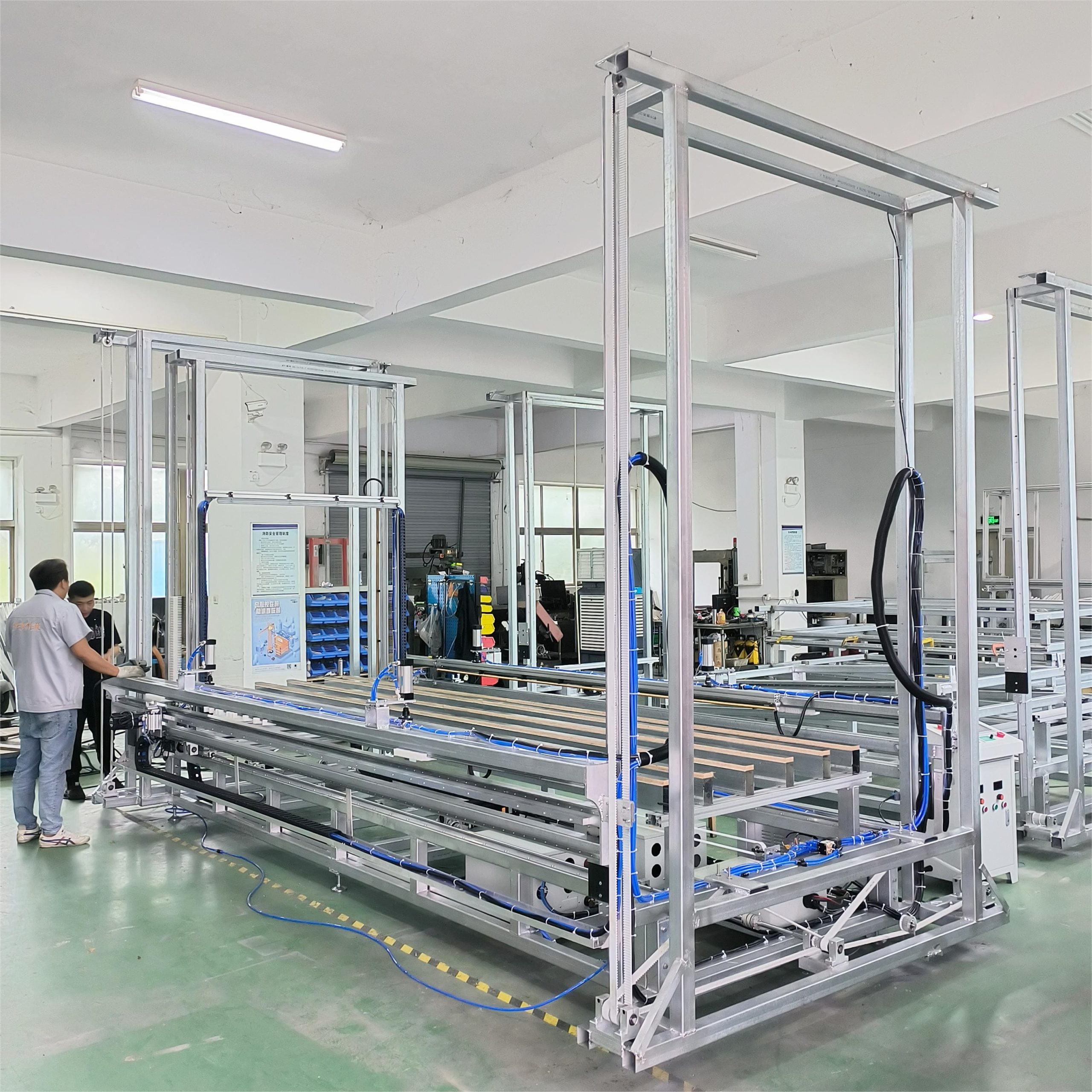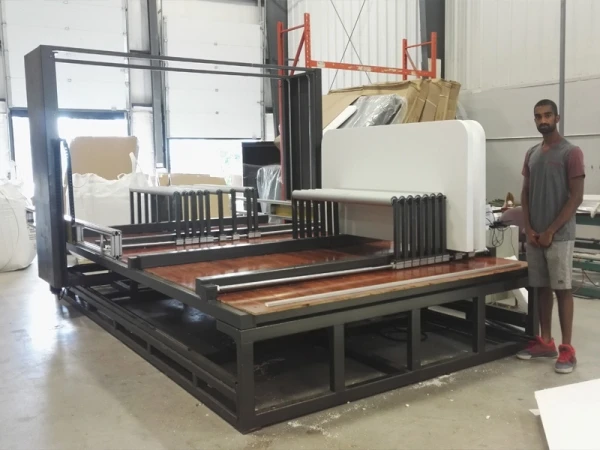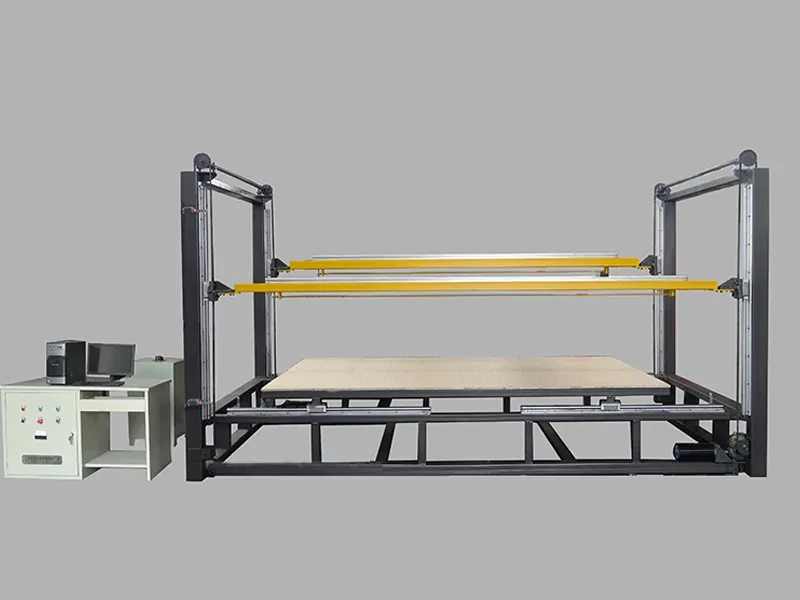Cutting foam cleanly and effectively is crucial in various industries, from packaging and insulation to crafting and manufacturing. While hot wire cutters are commonly used, they aren’t always the best solution, especially when dealing with different types of foam or seeking precise cuts without melting. This article dives deep into alternative methods for cutting foam without relying on a hot wire, offering practical tips and insights to help you achieve professional results. Whether you’re working with upholstery foam, closed cell foam, or rigid foam, understanding the right tools and techniques is key to getting the job done right. Read on to discover how to cut foam effectively and achieve the perfect slice every time, without the need for a hot wire.
Cut Foam Like a Pro: Mastering Foam Cutting Without a Hot Wire Cutter
Cutting foam precisely can be essential for countless projects, from crafting delicate models to creating robust packaging solutions. While hot wire cutters are often mentioned, they aren’t always the ideal tool, especially when you need a clean, non-melted edge or are working with certain foam types. This article is your guide to mastering foam cutting without relying on a hot wire. We’ll explore the best tools and techniques to slice through various foams, from soft upholstery foam to dense closed cell foam, ensuring professional-quality results every time. If you’re looking for efficient and effective ways to cut foam, you’ve come to the right place. Let’s dive in and discover how to achieve perfect foam cuts without the melt!
1. Why Cut Foam Without a Hot Wire Cutter?
Hot wire cutters are popular for foam, but they have limitations. While they melt through foam, this melting process can sometimes be undesirable. For instance, when working with closed cell foam, the melted edge can become rigid and less flexible than a cleanly cut edge. Hot wire cutters also produce fumes, which can be a concern for user safety and ventilation. Furthermore, they might not be suitable for all types of foam. Very dense or rigid foams can be challenging for hot wire cutters to handle efficiently.
Another key consideration is the type of cut you need. Hot wire cutters excel at creating smooth, rounded edges due to the melting action. However, if you need a sharp, clean, and crisp edge, especially for applications where the foam will be joined or fitted precisely, a mechanical cut using a blade or knife often provides a better result. Think about applications like creating inserts for packing or crafting intricate shapes where dimensional accuracy and a non-melted surface are paramount. In these cases, avoiding a hot wire cutter becomes not just a preference, but a necessity for achieving the desired outcome.
2. What are the Best Cutting Tools for Foam?
When it comes to foam cutting without heat, you have a range of excellent tool options. A sharp utility knife with a long blade is a versatile and commonly used tool. For thicker foams, an electric carving knife, like those you might use for Thanksgiving turkey, can work wonders. The serrated blades of an electric knife saw through thick foam with ease, providing cleaner cuts than many manual methods. For thinner foam sheet materials, heavy-duty scissors or rotary cutters can be very effective, especially for cutting thin and flexible foams.
Beyond knives and scissors, specialized foam cutters are available that are designed specifically for the task. These often feature very sharp blades and ergonomic handles to make foam cutting easier and more precise. Some even come with adjustable guides for achieving consistent thickness and straight cuts. For DIY enthusiasts and crafters, even a simple kitchen knife with a serrated blade can be surprisingly effective, especially for softer upholstery foam. The key is to ensure the blade is exceptionally sharp to minimize tearing and compression of the foam during the cut. Remember, a dull blade will tear and crush the foam, leading to messy and uneven results.
[Image of various knives and scissors for foam cutting]
Various cutting tools for foam, including utility knife, electric knife, and scissors
3. How to Cut Thin Foam Sheets Cleanly?
Cutting thin foam sheets requires a delicate touch and the right tools. Heavy-duty scissors are often the best choice for cutting thin foam. Ensure your scissors are very sharp and have long blades for making smooth, continuous cuts. Alternatively, a rotary cutter, commonly used in quilting and fabric crafts, provides excellent precision and clean edges, especially for straight cuts. When using scissors or a rotary cutter, it’s crucial to apply even pressure and avoid tearing the foam.
To further enhance the cleanliness of your cuts, consider using a straight edge or ruler as a guide. This is particularly helpful when you need to cut straight lines across a foam sheet. For intricate shapes or curves in thin foam, you might find that craft knives with very fine blades offer greater control. Remember to work on a clean, flat surface to prevent the foam from snagging or bunching up during the cutting process. And always prioritize safety – use a cutting mat to protect your work surface and keep your fingers clear of the blade. With the right technique and sharp tools, you can achieve beautifully clean cuts in thin foam sheets.
4. Cutting Thick Foam: What’s the Secret?
Cutting thick foam presents a different set of challenges compared to thin foam. The secret to successfully cutting thick foam lies in using a tool that can efficiently slice through the material without excessive compression or tearing. An electric carving knife is often the go-to tool for this task. Its reciprocating serrated blades glide through thick foam with minimal effort, providing relatively cleaner cuts. For manual cutting, a long, serrated knife or a drywall saw can also be effective, especially for straight cuts.
When cutting thick foam, it’s essential to work slowly and steadily. Avoid forcing the blade, as this can lead to uneven cuts and tearing. Instead, let the blade do the work, using a gentle sawing motion if using a manual knife. For very thick blocks of foam, you might need to cut from both sides to meet in the middle, ensuring a complete cut through the entire thickness. Using a guide, like a long piece of wood or metal clamped to the foam, can help you achieve straight cuts. Remember to compress the foam as little as possible during the cutting process to maintain its shape and prevent distortion. Patience and a sharp, appropriate tool are key to cutting thick foam cleanly and accurately.
[Image of electric carving knife cutting thick foam]
Using an electric carving knife to cut thick foam
5. Can You Really Cut Closed Cell Foam Without Melting It?
Yes, you absolutely can cut closed cell foam without melting it. In fact, for many applications, it’s preferable to cut foam without melting the edges, especially closed cell foam. As mentioned earlier, melting can create a rigid, less desirable edge. The key is to use sharp mechanical cutting tools instead of heat-based methods like hot wire cutters. A sharp utility knife, electric carving knife, or even a band saw with a fine-tooth blade can effectively cut closed cell foam cleanly.
The challenge with closed cell foam lies in its density and sometimes rigid nature. Therefore, using a very sharp blade is even more critical than with softer foams. When cutting, apply steady, even pressure and avoid rushing. For thicker pieces of closed cell foam, multiple passes with a sharp knife might be necessary to achieve a clean cut all the way through. Remember, the goal is to slice through the foam cells cleanly, rather than crushing or tearing them. With the right tools and careful technique, you can achieve excellent results cutting closed cell foam without any melting.
6. Electric Knives vs. Utility Knives: Which is Better for Foam Cutting?
The choice between electric knives and utility knives for foam cutting depends largely on the thickness and type of foam you’re working with, as well as the size and complexity of the cutting task. Electric knives excel at cutting thick foam, especially upholstery foam and similar densities. Their reciprocating blades make quick work of thick materials, and they are relatively easy to control for straight and gently curved cuts. They are a better choice when you have a lot of thick foam to cut or need to make long, straight cuts efficiently.
Utility knives, on the other hand, are more versatile for a wider range of foam cutting tasks. With a fresh, sharp blade, a utility knife can handle thin foam sheets, medium-density foams, and even some thicker materials, although it will require more manual effort for thick foam. Utility knives offer greater precision for intricate shapes and detailed carving. They are also more portable and readily available. For smaller projects, detail work, or when you need to cut various thicknesses of foam, a utility knife is often the preferred tool. Many users find that having both an electric knife for bulk cutting and a utility knife for detail work provides the most comprehensive foam cutting toolkit.
7. How to Get a Straight Edge When Cutting Foam?
Achieving a perfectly straight edge when cutting foam is crucial for many applications, from crafting to industrial uses. The key to straight cuts is using a guide and maintaining consistent pressure and cutting angle. A long metal ruler, a straight piece of lumber, or even a level can serve as an excellent guide. Clamp or firmly hold your straight edge along the desired cut line on the foam.
When using a utility knife or manual knife, run the blade along the guide in multiple passes, rather than trying to cut through the foam in one go. This prevents the blade from veering off course and ensures a cleaner, straighter cut. For electric knives, gently guide the knife along the straight edge, keeping the base of the knife flush against the guide. If you’re cutting very thick foam, you might need to flip the foam and cut from the opposite side, using the same guide line to ensure the cuts meet up perfectly. Patience and a steady hand are essential for achieving truly straight edges. Always double-check your measurements and guide placement before making the cut to avoid errors.
[Image of using a ruler as a guide for straight foam cutting]
Using a ruler as a guide to ensure a straight cut in foam
8. Cutting Curves and Shapes in Foam: Is It Possible Without a Hot Wire?
Yes, cutting curves and intricate shapes in foam is definitely possible without a hot wire cutter. While hot wire cutters are often associated with curved cuts, manual tools offer excellent control and precision for shaping foam. A utility knife with a sharp, pointed blade is ideal for carving curves and detailed shapes in foam. For softer foams like upholstery foam, scissors can also be used for smoother curves.
When cutting curves, it’s helpful to draw or trace the desired shape onto the foam first. Then, carefully follow the lines with your knife or scissors, making small, controlled cuts. Avoid trying to cut sharp curves in one pass, as this can lead to jagged edges. Instead, work gradually, removing small amounts of foam at a time to refine the shape. For complex shapes or 3D forms, you might need to cut multiple layers of foam and then assemble them. Files, rasps, and even sandpaper can be used to further refine the edges and surfaces of your foam shapes after cutting. With practice and the right tools, you can achieve remarkably intricate and precise shapes in foam without ever needing a hot wire cutter.
9. Avoiding Common Mistakes When Cutting Foam: What to Watch Out For?
Several common mistakes can lead to messy or inaccurate foam cuts. One of the biggest pitfalls is using a dull blade. A dull blade will crush and tear the foam instead of slicing it cleanly, resulting in ragged edges and an unprofessional finish. Always ensure your blades are sharp, and replace them frequently, especially when working on larger projects. Another mistake is rushing the cutting process. Foam cutting requires patience and a steady hand. Cutting too quickly can lead to uneven cuts, veering off course, and damaging the foam.
Forcing the blade is another common error. Let the sharpness of the blade do the work. Applying excessive force can compress the foam, distort the cut, and even damage your tool or yourself. Not using a guide for straight cuts is also a frequent mistake. Without a straight edge to follow, achieving perfectly straight cuts is very difficult. Finally, neglecting safety is a serious oversight. Always use a cutting mat to protect your work surface, keep your fingers clear of the blade, and wear safety glasses if necessary, especially when using power tools like electric knives. By being mindful of these common mistakes, you can significantly improve the quality and cleanliness of your foam cuts.
10. What About Foam Cutting for Large-Scale Manufacturing?
While DIY methods and hand tools are suitable for smaller projects, large-scale foam cutting in manufacturing settings demands efficient and precise machinery. This is where specialized equipment like the EPS Cutting Machine and CNC EPS Cutting Machine from YouLi come into play. These machines are designed for high-volume, accurate cutting of various types of foam, including EPS (Expanded Polystyrene) and EPP (Expanded Polypropylene).
[Image of CNC EPS Cutting Machine]
YouLi CNC EPS Cutting Machine for precise industrial foam cutting
For instance, the EPS Cutting Machine is ideal for efficiently cutting blocks and sheets of EPS into various shapes for packing, insulation, and construction applications. The CNC EPS Cutting Machine takes precision to the next level, utilizing computer numerical control to create complex 2D and 3D shapes with exceptional accuracy. These machines often employ wire cutting systems, but unlike simple hot wire cutters, they use precisely controlled and often cold wire or oscillating blade systems to achieve cleaner, more accurate cuts for industrial applications. For manufacturers requiring high production efficiency, automation, and consistent quality in foam cutting, investing in specialized machinery like that offered by YouLi is a crucial step. These machines are designed to handle large volumes, minimize waste, and ensure precise dimensions, meeting the demanding needs of modern foam product manufacturing. YouLi also offers other machinery like the EPS Pre-expander Machine and EPS Block Moulding Machine, providing comprehensive solutions for EPS and EPP foam production.
Key Takeaways for Cutting Foam Without a Hot Wire Cutter:
- Sharp Tools are Essential: Whether you’re using a utility knife, electric knife, or scissors, ensure your blades are exceptionally sharp for clean cuts.
- Choose the Right Tool for the Foam Type and Thickness: Electric knives are great for thick foam, while utility knives and scissors are better for thin foam and detail work. Consider specialized foam cutters for demanding tasks.
- Use a Guide for Straight Cuts: A straight edge is crucial for achieving perfectly straight edges.
- Cut Slowly and Steadily: Avoid rushing; let the blade do the work to prevent tearing and uneven cuts.
- For Curves, Carve Gradually: Use small, controlled cuts to shape curves and intricate designs.
- Consider Industrial Solutions for Large-Scale Manufacturing: Machines like CNC EPS Cutting Machines offer efficiency and precision for high-volume production.
- Safety First: Always prioritize safety by using cutting mats and keeping fingers clear of blades.
By following these guidelines and choosing the right tools and techniques, you can confidently cut foam like a pro, achieving professional results without relying on a hot wire cutter.
Post time: 02-05-2025









